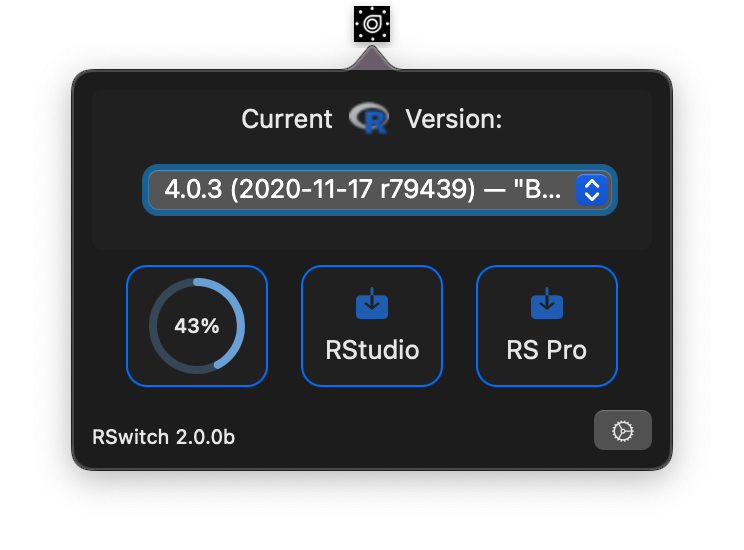

- #Optimal way to run r studio on mac for maximum speed big data how to
- #Optimal way to run r studio on mac for maximum speed big data code
Write.csv(a, file = file_name, row.names = FALSE) # write the data 'a' to the folder specified under the filename # For every row in x, get some more data and write it to a file in dir_cacheĭir.create(dir_cache, showWarnings = FALSE)įile_name <- file.path(dir_cache,paste0("file",i,".csv")) # the folder to read and write the cache date to # you aren't allowed to modify this line :)
#Optimal way to run r studio on mac for maximum speed big data code
# you will need to run this to get the code below to workĭata.frame(matrix(runif(1*1e4), ncol = 100)) You must finally output a fileTotal.csv that is the result of ame x with all the processed b frames appended to the end.You must add 42 to every number in the ame b.You have to write the a ames to files (pretend they are from an API call) and read them out again into b ames.You have to fetch data into ames x and a via the get_data function provided.
#Optimal way to run r studio on mac for maximum speed big data how to
Henrik the package creator goees into some more common parallel work flow examples in this blog post showing how to generate fractals in R. # probably not quicker as not a long running enough function You can then put them back together at the end. This special assignment is used instead of the standard <- it allows you to assign R functions to many processes at once, and so can be used to make code at asynchronously. Bear in mind it will need to be a long running function to benefit otherwise the overhead of setting up parrell processing will outweigh the cost.Ī nice way into this is using the future package which offers an easy UI, allowing assignment via %<-% For multi-core or even multi-computer applications, the speed up can be massive.

R is by nature a single process language, meaning its only using one core. It then applys the function to the first and second element of the list, takes that result and applies it to the third, takes that result and applies it to the forth….etc. Briefly it takes as its first argument a function, and for the second argument a list. Knowing what Reduce does is totally worth it, see “Learn to love lists” later. # 0.906 0.300 1.208 dim(y) # 20000 100īut back to the readability point - is it easier to know whats going on with the above or the previous example? Perhaps you needed to look up what ?Reduce does first - and where are the comments? Instead we create several new ames in a list, and only once finished do we rbind by passing it through the Reduce function: # avoid modifying original ame x

# 2.771 0.318 3.096 dim(x) # 10000 100īut the biggest improvement is when we avoid copying the ame.

Some may think this is due to an R myth to avoid for loops, and that can help even though lapply is a more efficient for loop coded in C: # a 100 column ame # 9.787 0.756 10.609 dim(x) # 20000 100Įach loop is copying the ame, then adding the new row to it which is inefficient. System.time() in this examples are used to output the execution times of the code within the code brackets. As an example, compare these execution times of these methods to add rows to a ame In particular, ames should be avoid to be modified within a loop. This can cause major slow downs if for example you are copying a large object every iteration within a loop. Or, the vectorised example: v <- c(1,4,5,3,54,6,7,5,3,5,6,4,3,4,5)īecause of this, always try to operate upon vectors when doing repetitive tasks - it can cause major benefits to code speed if you unfold structures into a vector beore running lots of code over them - for instance instead of a heavily nested list or ame make code that runs on a vector.Ī key difference with R than other languages is that it isn’t always modifying objects directly, but rather on copies of objects. In general this means that what you may want to achieve with a loop in other languages, you can operate directly on a vector with R.Įxample - these both do the same thing, but one is vastly superior: v <- c(1,4,5,3,54,6,7,5,3,5,6,4,3,4,5) R has special functions that treat vectors very efficiently, so you should always be trying to work with vectors rather than looping around objects if you can. In fact, you could say that R’s unique feature is that it treats everything as a vector ( 1 is actually a length 1 numeric vector in R!) A key first step is to embrace R’s vectorisation capabilties.


 0 kommentar(er)
0 kommentar(er)
